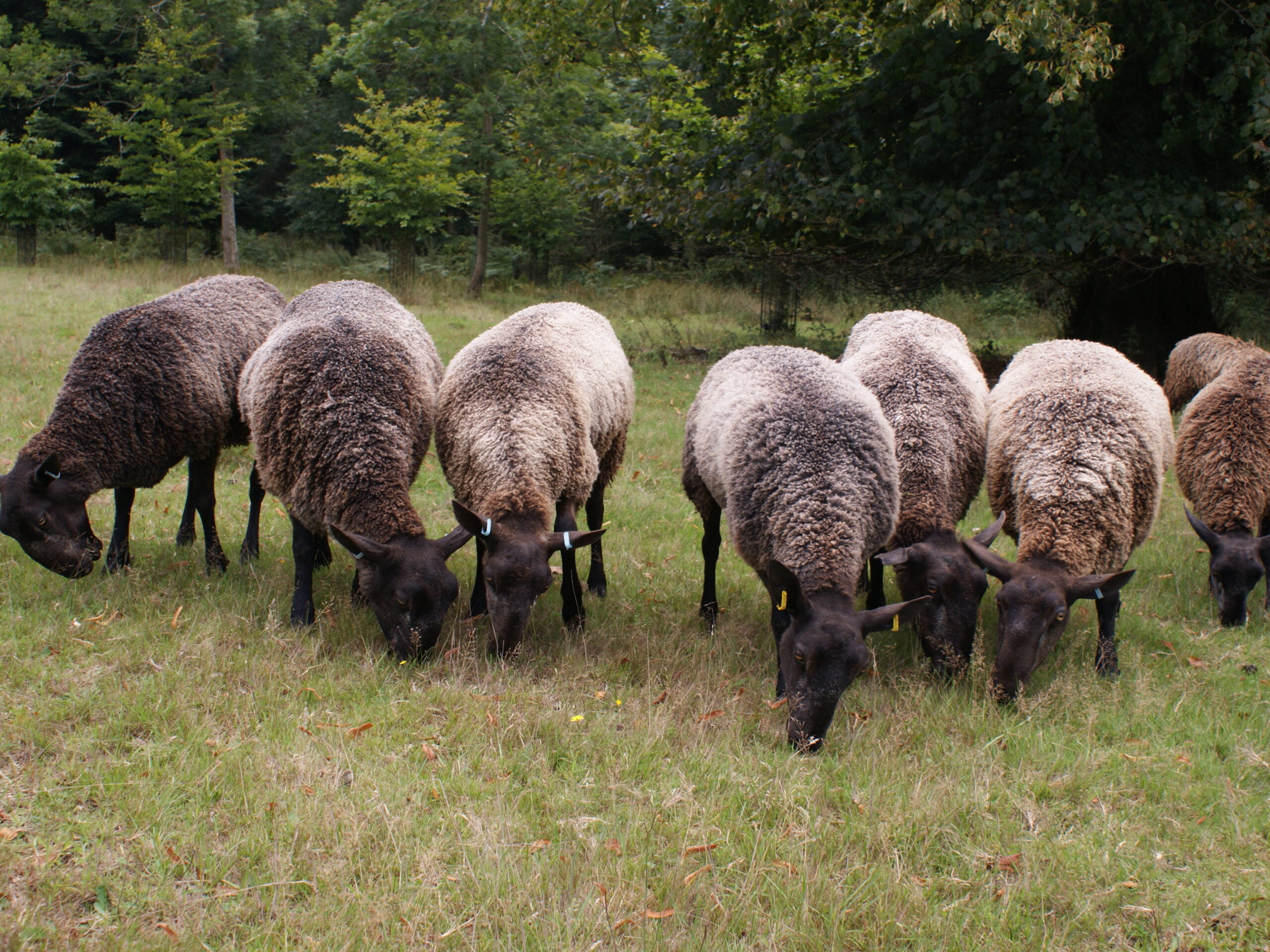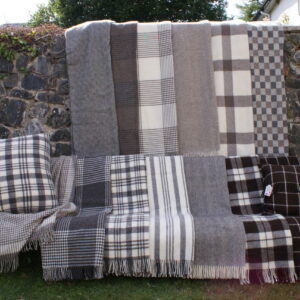My Sheep and Me
Langabeer Farm
Langabeer is the kind of small traditional farmstead rarely seen today, quite unmolested by modern development or conversion. Once part of a much greater holding, it now sits in quiet isolation with views across to the Moor, gifting a peaceful environment for the sheep and their shepherd.
After much land restoration, the fields have undergone complete renewal, from ploughing to drilling new seeds, and now provide the flock with liberty and nourishing fresh, lush meadows. Future farming will be managed on an extensive basis without the use of agro-chemicals to encourage biodiversity of flora and fauna. There are small wood piles creating deadwood habitats for insects, squirrels and rabbits and native trees providing nesting spots and perches for a variety of birdlife. And a little wet ground providing microhabitats for freshwater invertebrates. The patchworks of fields, hedgerows and grazing livestock are central to Devon’s landscape and ecology.
Me and the Sheep
An unashamed sheep addict, I have been taking care of my flock for twenty years. With no sheep farming background it was steep learning curve at the beginning but it has been an amazing and fulfilling journey with some tears and plenty of laughter.
Sheep are wonderful creatures to care for and they keep me on my toes on a daily basis. They are inventive, funny and naughty and can be certainly be a challenge at times. But the pleasure of lambing and watching them grow into strapping youngsters and onto adulthood is really rewarding.
My sheep are fed on wholesome home-grown hay and haylage and all their feedstuffs are top quality, sourced locally from other farmers, mills or suppliers. Good stockmanship is the key to animal welfare so I strive to maintain high standards at Langabeer Farm.
‘…the life of a lamb is no less precious than that of a human being. The more helpless the creature, the more it is entitled to protection by man from the cruelty of man.’
Ghandi
The Five Freedoms
Freedom from Hunger and Thirst – my sheep are well fed on an uncomplicated diet and have ready access to water.
Freedom from Discomfort – my little mob have good natural shelter in the form of hedges, banks and spinneys, that provide shade in the summer and protection from wind and rain in the winter. They are housed in a new light, well-ventilated, deep-bedded polytunnel through the worst of the winter months.
Freedom from Pain, Injury or Disease – by prevention or rapid diagnosis and treatment (my vet bills will attest to this one!).
Freedom to Express Normal Behaviour – my sheep are not intensively reared and have plenty of pasture to roam and knock about (literally if you’re a ram) with their mates.
Freedom from Fear and Distress – I ensure that they are not subjected to conditions or procedures that would cause stress or mental suffering.
Meet the Flock
Bluefaced Leicesters
My Bluefaced Leicester flock is a mixture of white and coloured ewes and rams plus a few wethers who are pets and just kept for their wool and lovely temperaments.
They are tall, elegant sheep with majestic Roman noses and lots of character. Their bright alert eyes, huge erect ears, long neck, strong back and broad shoulders make them stand out in the crowd. Fully grown, rams can weigh up to 110kg and ewes up to 90kg.
All of my original ewes came from Wales, many from the prestigious Grugor flock formerly in Denbighshire, some from the Great Llwygy flock at Pandy in Powys and some from the high-flying Craig Yr Osedd and Mytyrian bloodlines. My homebred sheep have all the strength and quality of their forefathers.
The Daddy of Them All
The BFL has been described as ‘the vital piece of the UK sheep industry’, because when crossed with any hill ewe, the BFL ram produces the famous Mule Sheep, the backbone of British meat production. The crossing ability of the Blueface means that a Mule can be ‘designed’ to suit any type of farm. She will lamb in her first year and continue to produce for at least six years with little lambing difficulty, offering plenty of twins, good mothering ability and excellent feet. White sheep are certainly favoured by the pedigree breeders in the UK, but the coloured rams are often favoured by hill farmers wanting a robust ram to produce Mules, as the coloured animals are considered by some to be more robust than their white brothers.
Jacob Sheep – with Coats of Many Colours
The Jacob originated in Syria 3000 years ago, arriving in England in the 18th century to graze the parks of country estates. They are hardy and resilient to adverse weather conditions so equally suited to hill or lowland pastures.
They are long lived, prolific and lamb easily, rarely needing assistance. They are very good mothers and will give enough milk to raise triplets easily. The lambs are vigorous with an exceptional ‘will to live’. If you cross a Jacob ewe or ram with any other breed you will always get coloured lambs.
Lush Lustrous Wool
The Bluefaced Leicester fleeces are tightly purled and open cleanly to the skin. Although their fleeces are light (weighing just 1 – 3 kg), the wool is fine, long (85-90cm), dense and resilient, and of outstanding quality. The Bluefaced Leicester produces the finest commercial ‘lustre wool’ in the world. Because it lacks surface scale on its fibre, it’s brighter and softer than other wools and with a 25-26 micron diameter; it is highly prized and can be compared in character to the finest mohair and alpaca.
My knitting yarn comes from the Jacob sheep and their crossbred offspring, whose fleeces produce good quality demi-lustre wool, averaging about 34 microns in fibre diameter 3–4” long. It is much sought after because of its natural colour variation.


















